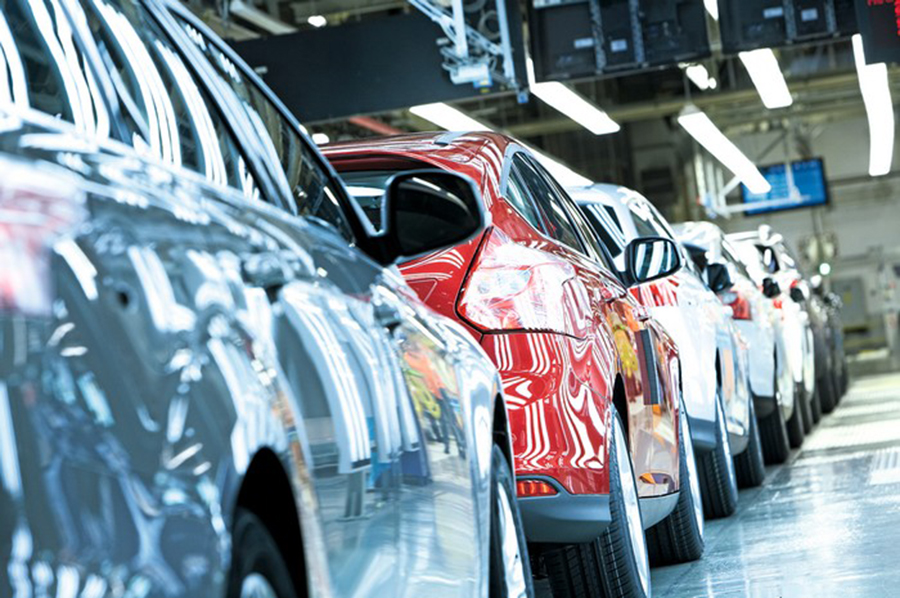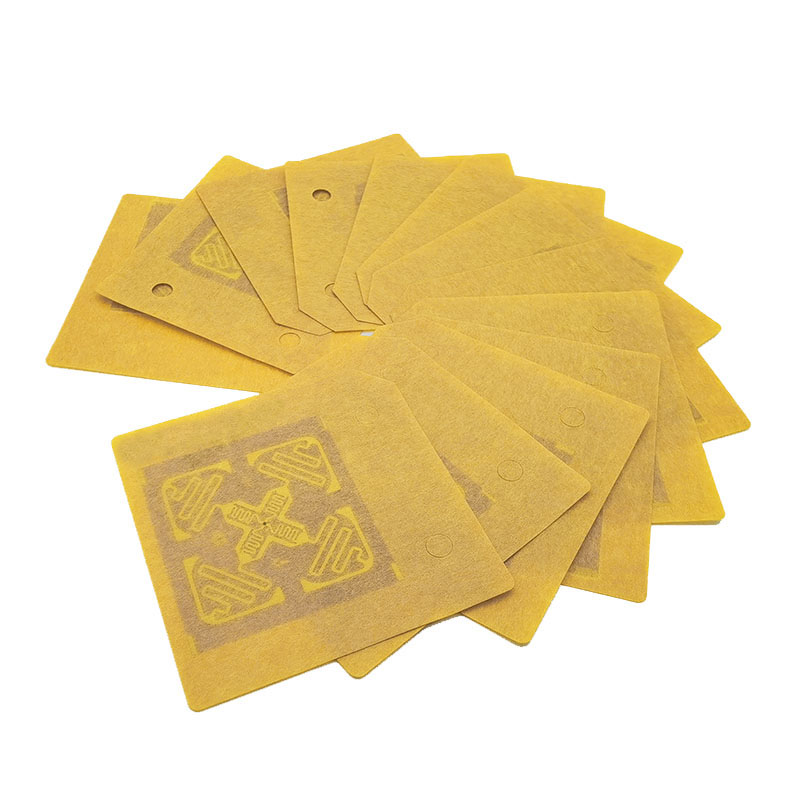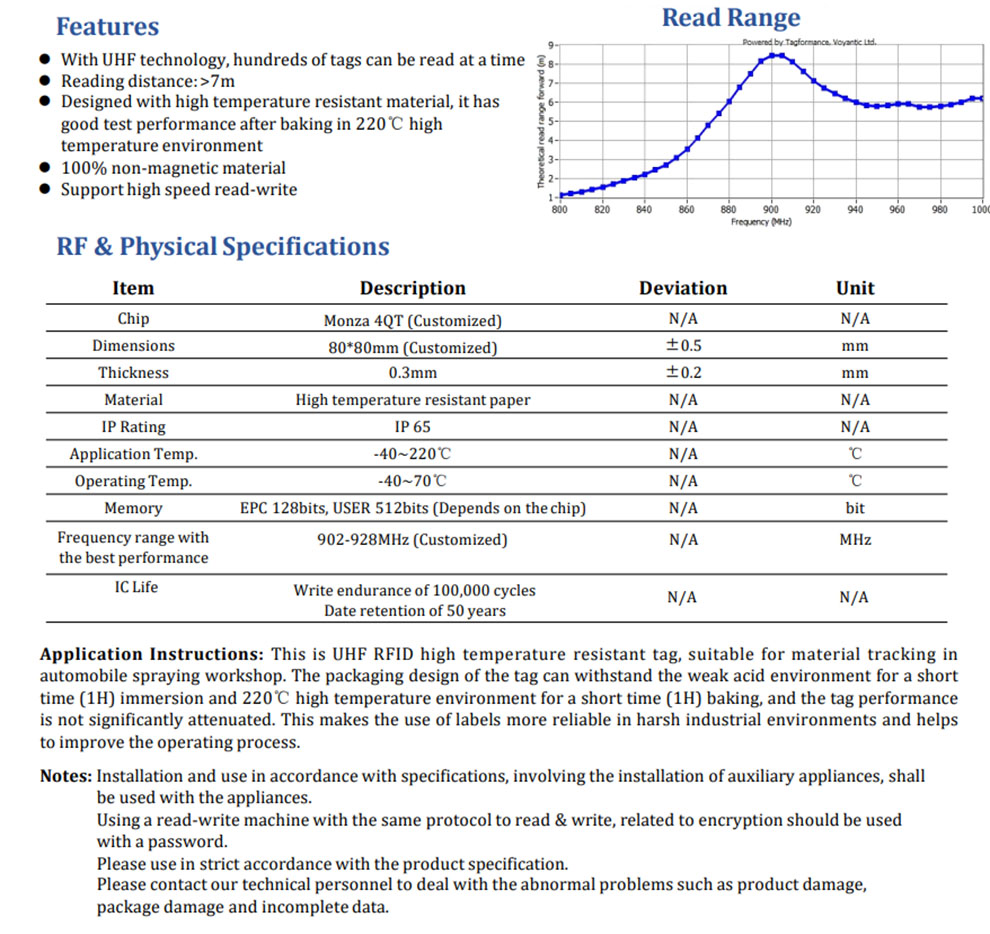-
Tel : +86(0)755 21013852
-
Email : info@zjiotech.com
Tel : +86(0)755 21013852
Email : info@zjiotech.com
Transparency and repeatable tracking are becoming more and more important for car manufacturers as the production lines of large car manufacturers are growing faster and more cars need to be built in parallel on the production line.

[Overview of Ford's Saarlouis car production plant
Flexible production line
As an "engine" of economic growth, the Ford company's Saarlouis automobile production plant plays an important role in the economic development of the German state of Saarland. To date, the Saarlouis car production plant has produced 12 million vehicles and the number is still growing. Ford's Saarlouis car factory is one of the most efficient and productive car factories in Europe. Ford is also Saarland's largest provider of jobs. Currently, Ford employs 6,000 people, including jobs at the group's parts suppliers. Currently, 14 suppliers of components are located directly in or near the industrial park in Saarlouis.
Ford's Saarlouis car production plant has highly flexible production lines, each producing up to 28 vehicles of five different models. Eighty percent of the cars produced at Ford's Saarlouis car factory are exported to 80 countries around the world. In this way, the company's car exports account for one-third of the total car exports of the Federal Republic of Germany. In Saarland, Ford's cars also sell well: Ford's market share in Saarland is significantly higher than average. ]
EHB adopts RFID-controlled delivery of auto body parts
In order to effectively control the Electric Suspension Monorail (EHB) that transports car body parts in the production plant, Ford has installed sensor technology devices in the EHB steel structure of the company's production plant in Saarlouis since 2013. RFID device. Dr. Klaus Schmitz, Engineer and Project Leader for Conveying Technology at Ford, said: "For conveying the car body parts, we installed an RFU620 reader for the identification of car body parts in the EHB. Since Ford's production in Saarlouis The factory produces 1,600 cars every day, which will generate a large amount of various data. Therefore, in the future, it is possible for us to deliver parts through EHB for the car body production line and even the EHB installation of the plywood production line, and from the plywood production line. The electronic documentation is seamlessly created through the accessories of the ground conveying technical installations.”
In this RFID project, Ford's production plant in Saarlouis was transported by EHB with an identification mark on one of the side walls of the car body. In this way, the RFID chip obtains the relevant information of the 4 kinds of car bodies produced by the car factory, that is, obtains the relevant information of the car body on the left or right side of the Focus and C-Max car bodies.
The automaker's EHB, which delivers auto body parts, is called "SO-22." At Ford, a total of 80 hooks in the EHB of the body building department of the car manufacturer are equipped with electronic data carriers that transfer the conveyed body parts at 5 points in the body building production process. The related information is written and read on the RFU620 reader. Here, the most important thing is to achieve the perfect distribution of car body parts on the production line. That is to say, the hook of EHB should correctly lift the auto body parts it is supposed to transport, not other objects.
Dr. Klaus Schmitz explained that the UHF (Ultra High Frequency) technical solution has an accurate range of 20 to 30 cm, while the information read and write target of the RFID identification device specifies a maximum distance of 1 m, which can meet the requirements of the production line, We are very confident about that. If these regulatory requirements are to be met, it is conceivable that the technology could actually be adopted earlier in the auto body structure workshop of an automaker, or even throughout the automaker—from the manufacture of the car body to the delivery of the finished product to the end customer A common information medium such as RFID identification devices is used throughout the entire vehicle.
[More abundant than image processing technical solutions
The best technical solution to the challenges of comprehensive automatic identification
In recent years, the use of automatic identification technology has not only greatly increased, but also further into the road of Industry 4.0. At the same time, the capabilities of 3D identification technologies (radio frequency identification technology, camera-assisted code readers and laser barcode readers) continue to evolve. The combination of these two developments has created a hugely growing space for technological solutions.
Therefore, application considerations and evaluations, as well as technical and economic framework conditions, are necessary to select the best technical solution. ]
Application of RFU620 Reader in Ford's Automobile Factory
In order to meet the technical requirements of Ford's Saarlouis automobile production plant for car body recognition, and to meet the requirements of the best reading and distribution rate of auto body parts as much as possible, the project partners decided to use RFU620 reader, RFU620 reader's The frequency range is 860 to 960 MHz. The device complements the combination of UHF (Ultra High Frequency) technology products developed by Sick and provides Ford's Saarlouis automobile production plant with an optimized medium-range read and write that is closely integrated with the factory's vehicle body assembly operations. device. Klaus Pübben, Head of Key Data Accounts at Sick, says: Numerous filtering functions and various connection possibilities make this technical solution a multi-faceted solution. Furthermore, Sopas operating surfaces provide tools for quick, flexible and easy integration. "The RFU620 reader/writer installed in the EHB of the Ford Saarlouis car factory provides the car factory with the possibility to adjust the transmission power with a maximum range of 1 m, which is suitable for the information recognition of the car factory. Reading situation. Here, the lines of the reader/writer generate a uniform and symmetrical information exchange field, and in such an information exchange field, the auto body parts transported by each hook of the EHB can be read and written.
“For example, at Ford, because the RFID identification device has both a permanent memory and an SD card backup, it is very convenient for the company to repair electronic equipment parts by using such a device,” Pübben points out. It is believed that this is one of the many advantages of the RFID identification device in practice. "Previously, Ford's Saarlouis car production plant had a wide variety of systems for data storage, so it was simply not possible to implement a uniform technical solution for the repair of electronic equipment."
Thanks to the "adaptive energy monitoring" function, the transmission function of the RFU620 reader can be increased autonomously until it can read the car body parts on the EHB hook. Pübben says: “By eliminating the possibility of detecting auto body parts on several hooks at the same time, this eliminates the potential for confusion in the reading of auto body parts on The car body parts are exchanged with a certain data structure, and the car body parts on the hook can receive a signal of a certain signal strength, or exclude the same car body parts on the hook for multiple detections in a definable time period Information."
All of these ensure the reliable data transfer performance of the RFU620 reader during read and write cycles. The RFU620 reader is part of the Sick platform "IDPro". On this platform, the equipment of the three automation-compatible technical departments can exchange data with each other by means of laser scanners, cameras and RFID identification devices.
Get up and running quickly with intuitive guidance
"Despite the complexity of the Ford project, a second fieldbus system was connected to the existing plant," says Oliver Biwer, automation project manager at Resa Systems in Saarwellingen, which is responsible for the integration of the control technology units in the production lines of the car production plant. Since then, the project has worked very well. Previously, the intuitive Sopas user panel was a major prerequisite for the 5-radio-based RFID identification device, and now this prerequisite has become a guarantee for Ford's project. ” The application of the RFID identification device provided by Sick Company is clear at a glance, which once again simplifies the operation of the identification device on the production line of Ford's Saarlouis automobile production plant. The automation technology department, the safety system, the imaging system and the automatic identification system are the integrated work of components supplied by Sick. Over the years, Resa Systems Ltd. and Sick have developed a close working relationship on many joint projects.
The participants of the project are very satisfied with the test run of the RFID identification device at Ford's Saarlouis car production plant so far. Dr. Klaus Schmitz, project leader at Ford, said: "From our point of view, we want to control all equipment in our car plants optimally and relatively cost-effectively with the help of technologies such as RFID identification devices. For example, it is also possible to include control Application of repair procedures and special equipment in our car factory. In any case, the RFID identification device must be able to continuously meet new requirements. For example, if the RFID project is extended to the painting department of the car factory, and the RFID identification device is located in the paint shop for a long time. Near the car body, it must be absolutely resistant to high temperatures.”
High temperature resistance test of RFID identification device for auto body parts


Due to the above reasons, since the end of 2014, people have started a comprehensive high temperature test on the RFID identification device of the auto body parts on the EHB hook. Shenzhen ZhiJie IOT Application Co.,Ltd takes few years to research and test , also high appreciate our loyalty car factory customers to provided more testing chances and we also have launded high temperature and chemical resistant UHF tags for meeting tracing car factory whole manufacturing , we believe that those products enbale the high flexibility of the entire production logistics process of car factory which will be a great opportunity for car factory , A real competitive advantage factor.
Statement : Pictures above only show the product , the intellectual property rights of the logo owned by their trademark